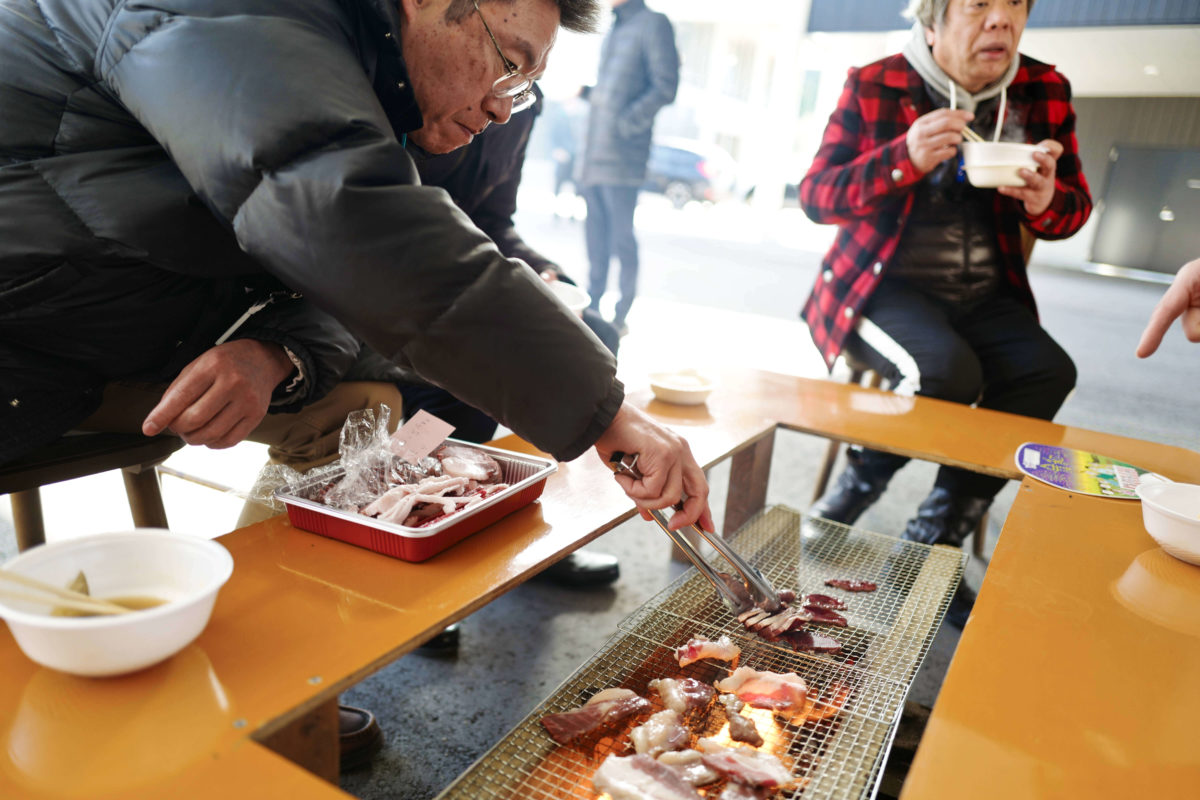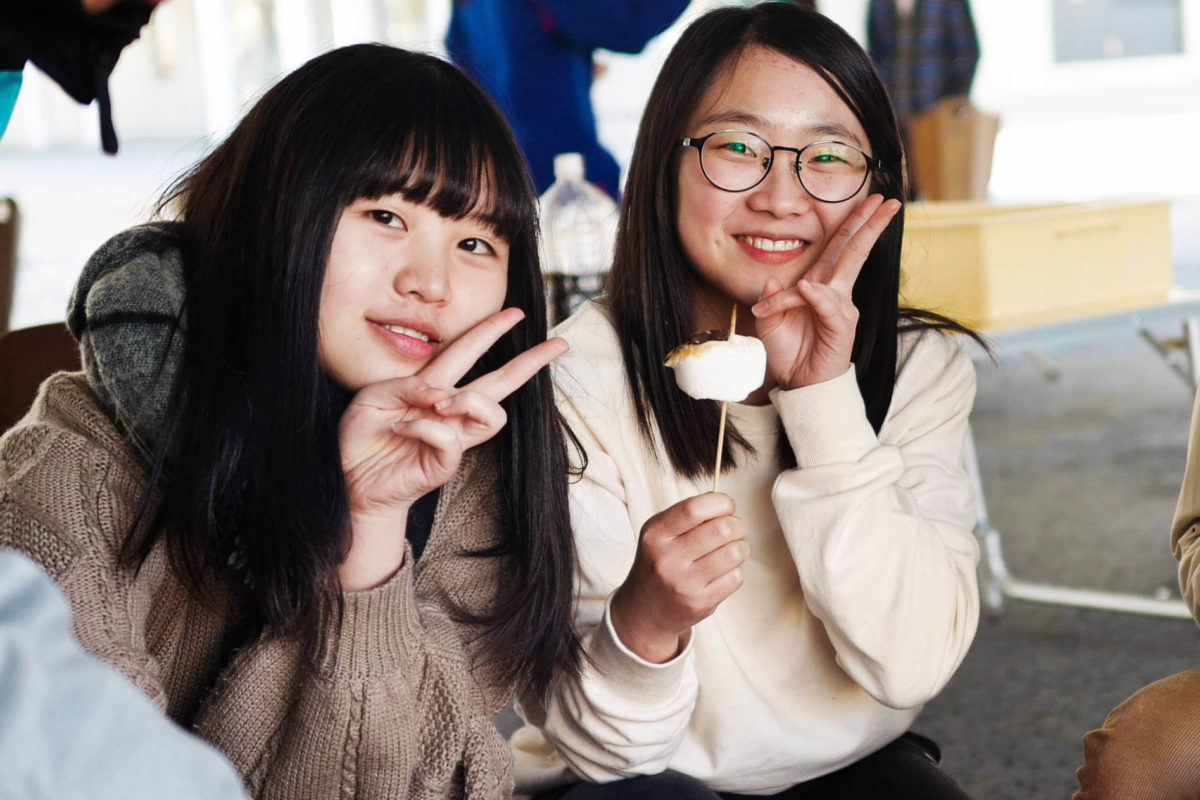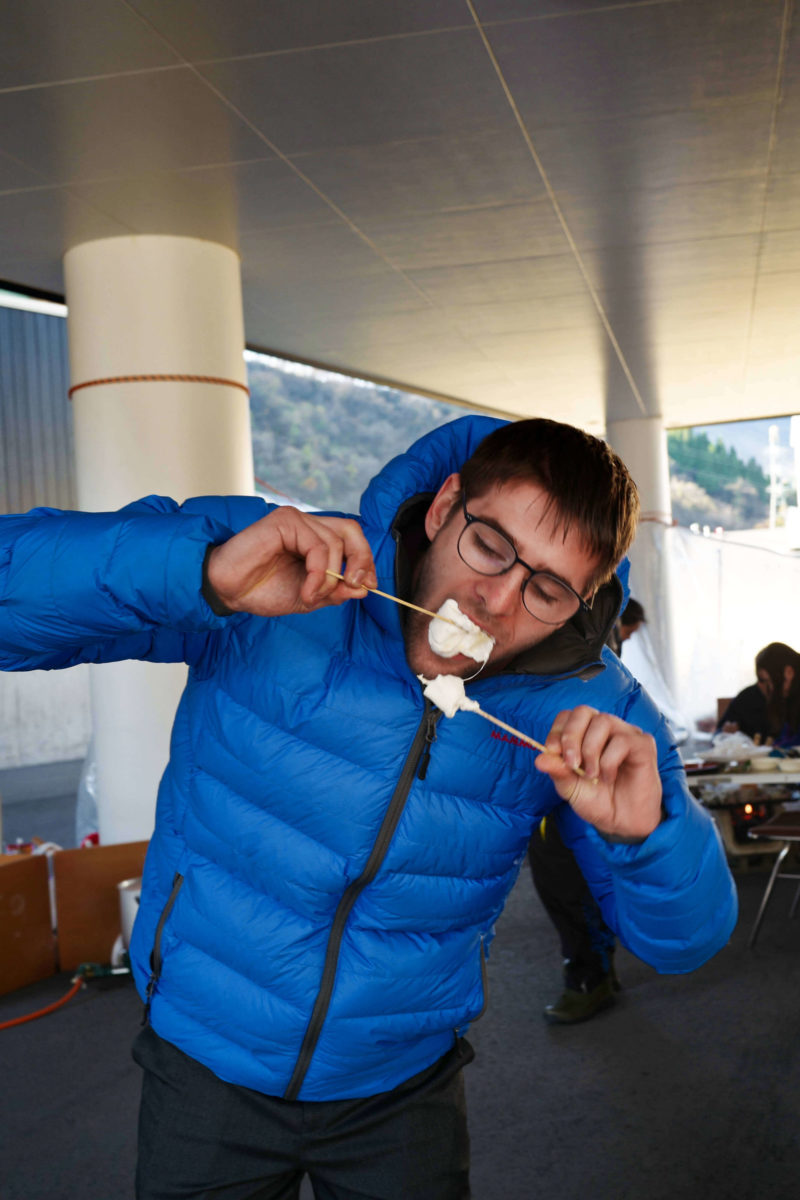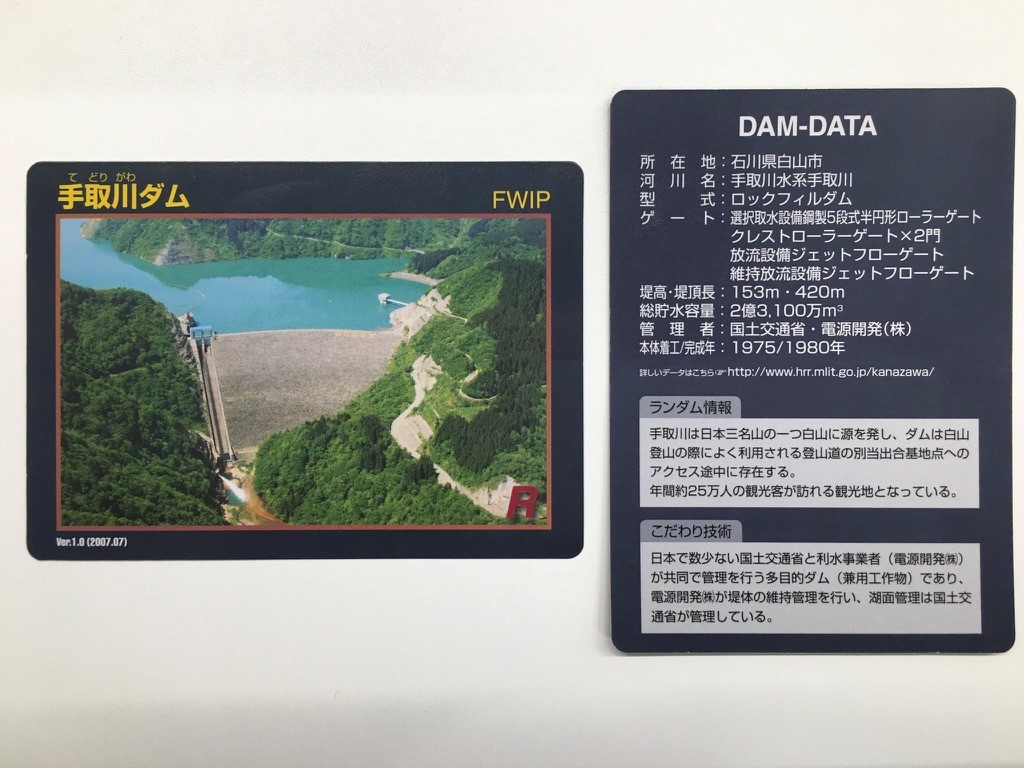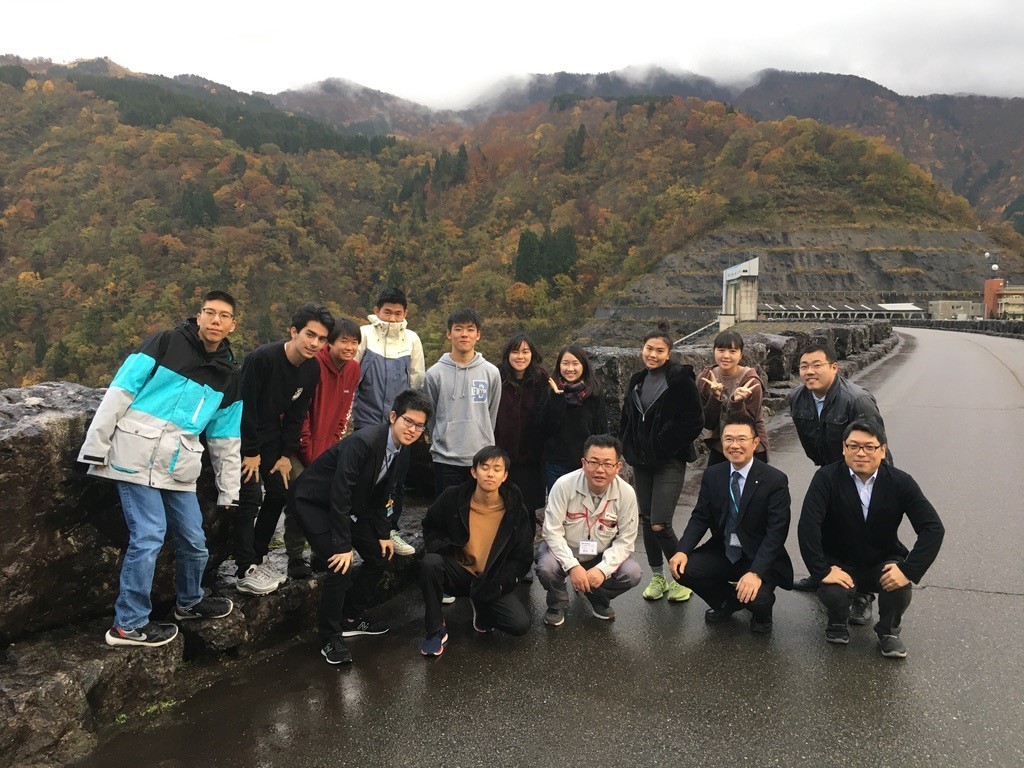 Hi everyone, its Ryan again! Today I’d like to talk about one of the highlights of November, the school’s Sports Festival (球技大会).
Hi everyone, its Ryan again! Today I’d like to talk about one of the highlights of November, the school’s Sports Festival (球技大会).
On 11/16, the S class students travelled down the mountain to compete with their classmates in the school’s annual Sports Festival. This year, the S1 and S2 students combined forces in badminton, basketball, and dodgeball to compete against the upperclassmen.
The S class teams faced tough opposition against bigger, stronger, and more experienced students, but they still fought hard. Their tenacity and enthusiasm were impressive, and the underclassmen were able to win many matches against their seniors. Ultimately, S class teams were able to secure 5th place in both the basketball and dodgeball tournaments.
Results aside, the festival was a good opportunity for the students to break up the monotony of their schoolwork while working together with their classmates. The students enjoyed their chance to get moving and test their skills while being supported and cheered on by their friends and cleverly took advantage of the nearby bookstore to purchase the latest volumes of their favorite manga and light novels.
In the end, the Sports Festival was a great experience for all the students. The only complaint that anyone seems to have is that they weren’t able to stop at McDonald’s on the way back!
Ryan J. Vicencio
やあ、みんな!ライアンだよ!今日は11月にあった球技大会のハイライトを紹介していきます。
11月16日、S科の学生が恒例の球技大会に出場するために山を下りました。今年はS1とS2の学生がひとつのチームとなってバドミントン、バスケットボール、ドッジボールの種目で先輩たちと対決しました。
S科が相対するチームは自分たちより身体が大きく、力が強く、経験値も勝る上級生たちでしたが、必死に食らいつきました。その粘り強さと根性は目を見張るものがあり、年下にもかかわらず先輩に勝利する試合がたくさんありました。結果的にS科はバスケットボールとドッジボールのトーナメントで5位に入賞することができました。
結果はさておき、球技大会のおかげで毎日の学業から離れて仲間と力を合わせる良い機会となりました。身体を動かして、友達に応援されつつ自分の力を試すことを楽しみました。また、ちゃっかり近くの本屋で好きな漫画の最新刊やライトノベルを購入する気転も見せました。
球技大会は全学生にとって素晴らしい体験となりました。唯一聞こえた文句は帰り道でマクドナルドに寄れなかったことです!
ライアン・J・ビセンシオ
 Hello, it's Jonathan, the camera man. On November 30 (Sun), we held a barbecue party at the Hakusanroku campus. This was no regular barbecue party with beef, pork, and yakisoba. We had wild boar, venison, and bear meat as well, and lots of it! There was even bear soup cooked "tonjiru" style with vegetables and miso. The nurse ladies also brought a wood stove, which the students used to make original pizzas. Students and teachers sat down around the grills and ate delicious food to their heart's content. Thankfully, we had sunny blue skies and the heat from the flames kept us warm. There was a lot of chatting, laughing, and merriment all around. This event was only made possible with the help of many people. It has been an annual event for two years and I hope it continues to be so.
Hello, it's Jonathan, the camera man. On November 30 (Sun), we held a barbecue party at the Hakusanroku campus. This was no regular barbecue party with beef, pork, and yakisoba. We had wild boar, venison, and bear meat as well, and lots of it! There was even bear soup cooked "tonjiru" style with vegetables and miso. The nurse ladies also brought a wood stove, which the students used to make original pizzas. Students and teachers sat down around the grills and ate delicious food to their heart's content. Thankfully, we had sunny blue skies and the heat from the flames kept us warm. There was a lot of chatting, laughing, and merriment all around. This event was only made possible with the help of many people. It has been an annual event for two years and I hope it continues to be so.
Jonathan
皆さん、お元気ですか?ジョナサンです。2019年11月30日(土)、白山麓キャンパスでバーベキュー大会が行われました。牛肉、豚肉、焼きそばのレギュラーメンバーに加え、なんとイノシシ、鹿肉、熊肉が出ました!しかも大量にです!豚肉の代わりに熊肉を入れた豚汁ならぬ「熊汁」も登場しました。また、クリニックの看護師さんが薪ストーブを持参し、学生がオリジナルのピザを焼くこともきました。学生と先生はグリルを囲んで満足のいくまで美味しい物を食べて会話を弾ませました。ありがたいことにこの日は晴天に恵まれ、冷たい風が吹いていましたがバーベキューの炎と愉快な仲間で暖かい時間を過ごしました。このイベントはたくさんの方々の協力のおかげで実現しました。去年に引き続き2回目ですが、来年も行われることを願っています。
ジョナサン
 A few weeks ago, there was a soba festival here in Hakusan. At the festival, they had a variety of delicious local foods. There were many stands selling soba, beef, pork, takoyaki, melonpan, oysters, and even expensive Noto beef! I got to try deer meat for the first time in the form of a sausage!
A few weeks ago, there was a soba festival here in Hakusan. At the festival, they had a variety of delicious local foods. There were many stands selling soba, beef, pork, takoyaki, melonpan, oysters, and even expensive Noto beef! I got to try deer meat for the first time in the form of a sausage!
The ICT students were helping at the festival as well! The second year students worked on Saturday and the first year students worked on Sunday.
When I went on Sunday, I saw many of the students working hard at a variety of tasks, including guiding cars to vacant parking spaces and emptying and replacing the trash cans when full. It was quite refreshing to see the students in a different setting, as part of the local community! Many students seemed exhausted after the day of work and several told me that it was indeed very hard and tiring work.
I'm glad the students have the chance to participate in local community events and I look forward to seeing such interaction again in the future!
Anne Isobel Tan
今月の始め、ここ白山麓でそば祭りがありました。そば祭りでは地元の美味しい食べ物がたくさんありました。たくさんの露店が立ち並び、そば、牛肉、豚肉、たこ焼き、メロンパン、牡蠣、高級な能登牛まで!私はソーセージという形で、人生で初めて鹿肉を食べました!
国際高専の学生もお祭りを手伝っていました!土曜日は2年生、日曜日は1年生がボランティアをしました。私が行った日曜日は学生たちが駐車場の整理、ゴミ箱の入れ替えなど様々な業務をこなしており、普段とは違う地元のイベントを手伝う姿が見られて新鮮でした。大変な仕事だったようで、終わったあと疲れたと言っていました。
学生たちがボランティアする機会があってよかったです。これからも地元のイベントに参加する機会が増えることを願っています。
アン・イソベル・タン

後学期に入り授業の一環としてS2学生4名は白峰地域を調査しました。昔の生活、古民家、道具、仏、資料を拝見し、伝統工芸にも触れ、使い馴染んだ生活道具、家具、壊された仏の状態などからも情報を得ることができます。
白峰地域の調査で、私自身も白峰の歴史の深さを知ると同時に、そこで感じたことと言えば、この様な調査でも、単に事象を記録するだけでなく、創造力を働かせて調査することが重要であるということです。(当然と言えば当然なのですが)
人類が生き続けている間、神話、暦、宗教、科学など、時代とともに様々な角度から宇宙と関わり続けています。人は夜毎見られる星を眺め、多くの創造物を生んできました。また、時に人は不思議な雲や空、光などによる幻想的風景などの非日常的な出来事に美や神を感じ、創造性を働かせます。
このように、人はどのような場面においても創造することができます。創造を源として新たなものごとを生み出すのは、人間以外に存在しません。そして、人は創造することで生き延びた生き物と言えるでしょう。
最近では、自然や日常のちょっとした気付きポイントをカメラに納め、不特定多数の人へ情報発信を可能とする、俗にいう「インスタ映え」を意識したSNSが流行っています。スマホの出現により、美しいものや神秘的な事象などを簡単に写真に納めることができ、フィルムの現像費やプリント料金もかからず、デジタルカメラ機能さえあれば無料で撮り放題です。とても嬉しい時代になりました。
私の学生時代とは違って高品質のデジタル機器に囲まれた学生たちには、スマホやデジタルカメラを使用していろんなものを積極的に撮って欲しいです。夕日の事象をきれいと思うだけでなく、その反対に方向にある雪山の美しさを予想、発見できるエンジニアってかっこいいですよね。
小髙 有普
Soon after the second semester began, four S2 students visited the Shiramine district to conduct research for the Engineering Design class. We observed old lifestyle, traditional houses, tools, Buddhist statues and documents. We also experienced traditional crafts and gathered precious information from well-worn tools, furniture, and destroyed Buddhist statues.
One thing I learned from this expedition (besides the deep history of Shiramine) is that all research must not only be a record of facts. It is crucial to used one's imagination when observing the research target. (This is obvious when you think about it.)
Mankind has studied the universe throughout history through mythology, chronology, religion, science, etc. We looked up to the stars and created countless works of imagination. From time to time, people sense beauty, the presence of god, and gain inspiration from seeing fantastic and extraordinary sights in the shapes of clouds, sky, and lights.
As history has shown, mankind can use their imagination in any situation. Mankind is the only specie that imagines and creates new things. We can say the reason that we survived this long is because of our creativity.
Lately, taking pictures of nature or moments in life and sharing them with others, what we now know as Instagram or other SNSs is quite popular. Smartphones gave us the ability to take beautiful and mythical moments and save them forever. Taking pictures today is simple and does not require any film, printing, or payment as long as you have a smartphone or digital camera. It is a wonderful time we live in indeed.
I did not have this luxury of high resolution digital cameras when I was a student so I wish students would take advantage of their smartphones or digital cameras. Personally, I believe a true engineer does not only see the beauty of a sunset, but can also predict and discover the beautiful snow-covered mountain it shines upon.
Kodaka Arihiro
 現在1年生が履修しているEngineering Context IBでは、エネルギーを題材にした授業が行われています。毎回様々な発電技術や各国のエネルギー政策を取り上げながら、技術には光と影があることを踏まえた技術者倫理を学生たちは学んでいます。
現在1年生が履修しているEngineering Context IBでは、エネルギーを題材にした授業が行われています。毎回様々な発電技術や各国のエネルギー政策を取り上げながら、技術には光と影があることを踏まえた技術者倫理を学生たちは学んでいます。
この授業の一環で、白山麓キャンパスの近くにあるJPower手取川第一発電所の見学を行いました。この見学会は今年で2回目ですが、年々バージョンアップされています。JPowerの田中所長から、最初にダムカードが配られ、ダムの分類と手取川ダムの特徴をわかりやすく解説して頂きました。手取川ダムは日本で4番目のロックフィル型ダムで、運転開始から40年、水力発電のみならず洪水調整、上水道用水、工業用水など様々な役割を担っています。1時間ほどの講義の後、ダムの上部に移動し、巨大なダムの迫力を体感しました。気温が低く小雨が降る生憎の天気でしたが、美しい紅葉に彩られた手取湖を眺めながら、ユーモア溢れる田中所長のお話を楽しく聴講することができました。
山崎俊太郎
In the first-year student's "Engineering Context IB" class, we are currently studying about energy. Each class we pick up various power generation technology and different countries' energy policies, and discuss the good and bad of technological advancement from an ethical stand point.
Recently, we took a trip to the JPower Tedori River Dam 1 near the Hakusanroku campus. This was our second visit to the dam. However, it is evolving each year. First, Mr. Tanaka, the chief manager of JPower, distributed dam cards and gave a lecture about different types of dams and the characteristics of Tedori River Dam. Tedori River Dam is the fourth rock-fill dam in Japan and has served not only as a water-power generator, but also as adjustment for floods, and provider for waterworks and construction water. After the lecture, we moved to the top of the huge dam to see the spectacular view. Sadly, it was chilly and drizzling, but we enjoyed the beautiful panorama of Tedori Lake decorated with colored autumn mountains as we listened to Mr. Tanaka's humorous explanation.
Shuntaro Yamazaki





















